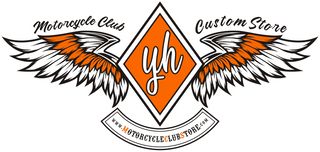Organizing a team-building event for a motorcycle club can be an exhilarating and rewarding experience. Such events not only strengthen bonds between members but also foster a sense of unity and camaraderie. To ensure your motorcycle club’s team-building activity is a roaring success, here are five essential points to consider:

- Define Clear Objectives
Before diving into the planning process, it’s crucial to define what you want to achieve with the team-building event. Clear objectives will guide your planning and help measure the success of the event. For a motorcycle club, objectives might include:
- Strengthening Camaraderie: Enhance the sense of community and trust among members.
- Improving Communication: Foster better communication and collaboration within the club.
- Encouraging Teamwork: Develop skills in teamwork and problem-solving.
- Celebrating Achievements: Recognize and celebrate the club’s milestones and individual contributions.
By establishing these goals upfront, you can tailor the activities to meet these objectives and ensure that every aspect of the event contributes to the desired outcomes.
- Choose the Right Activities
Selecting activities that align with your club’s interests and objectives is key to a successful event. Here are a few ideas tailored for motorcycle clubs:
- Group Rides: Organize a scenic group ride with specific checkpoints. This encourages members to work together, navigate, and enjoy the journey collectively.
- Bike Maintenance Workshops: Host a workshop where members can learn about bike maintenance and repair. This practical activity promotes teamwork and sharing of knowledge.
- Rally or Scavenger Hunt: Plan a motorcycle-themed scavenger hunt or rally with clues and challenges related to biking. This can be a fun way to test problem-solving skills and foster teamwork.
- Skill Challenges: Create skill-based challenges such as obstacle courses or slow-riding contests. These activities can be both competitive and collaborative.
- Social Events: Complement the ride with social events like a BBQ or picnic. This allows members to relax, bond, and discuss their experiences.
Make sure the chosen activities are enjoyable and accessible to all members, regardless of their riding experience or skill level.

- Plan Logistics and Safety
Effective planning is essential to ensure a smooth and safe event. Here are some logistics and safety considerations:
- Route Planning: If organizing a group ride, carefully plan the route to ensure it is suitable for all skill levels. Consider road conditions, rest stops, and safety measures.
- Safety Briefings: Conduct a thorough safety briefing before the event, covering topics such as group riding etiquette, emergency procedures, and necessary gear.
- Medical Preparedness: Have a plan for medical emergencies, including first aid kits and access to medical facilities. Ensure that at least one member is trained in basic first aid.
- Communication: Equip participants with communication devices like walkie-talkies or headsets to ensure everyone stays in touch during group rides.
- Weather Considerations: Monitor weather forecasts and have contingency plans in case of adverse weather conditions.
By addressing these logistics and safety concerns, you can minimize risks and ensure that the event runs smoothly.

- Foster Inclusivity and Engagement
A successful team-building event is one where all members feel included and engaged. Here’s how to foster inclusivity:
- Encourage Participation: Design activities that accommodate varying skill levels and interests. Ensure everyone has a role and feels involved.
- Solicit Feedback: Before the event, ask members for their input on preferred activities and any special requirements they might have.
- Recognize Contributions: Acknowledge and celebrate the contributions of different members. Whether it’s through awards, shout-outs, or simple appreciation, make sure everyone feels valued.
- Promote Team Dynamics: Encourage members to work together and support one another during activities. This helps build stronger relationships and a sense of unity.
Creating an environment where all members feel welcome and valued will enhance the overall experience and foster stronger bonds.
- Evaluate and Reflect
After the event, take time to evaluate its success and gather feedback. This will help you understand what worked well and identify areas for improvement. Consider the following:
- Feedback Collection: Distribute surveys or hold a debrief meeting to gather feedback from participants. Ask about their experiences, what they enjoyed, and any suggestions for future events.
- Achievement Review: Reflect on whether the event met its initial objectives. Assess how well the activities aligned with the goals and what impact they had on team dynamics.
- Documentation: Document the event’s highlights and key takeaways. This can be useful for planning future events and for sharing with members who couldn’t attend.
- Continuous Improvement: Use the feedback and evaluation results to make improvements for future events. Incorporate suggestions and address any issues to enhance future team-building experiences.
Evaluating the event helps you build on successes and refine your approach for even better results next time.

Conclusion
Planning a successful motorcycle club team-building event involves careful consideration of objectives, activities, logistics, inclusivity, and evaluation. By focusing on these key points, you can create an engaging and memorable experience that strengthens the bonds within your club and enhances the overall sense of community. So gear up, hit the road, and enjoy the journey of building a stronger, more connected motorcycle club. 🏍️💪
